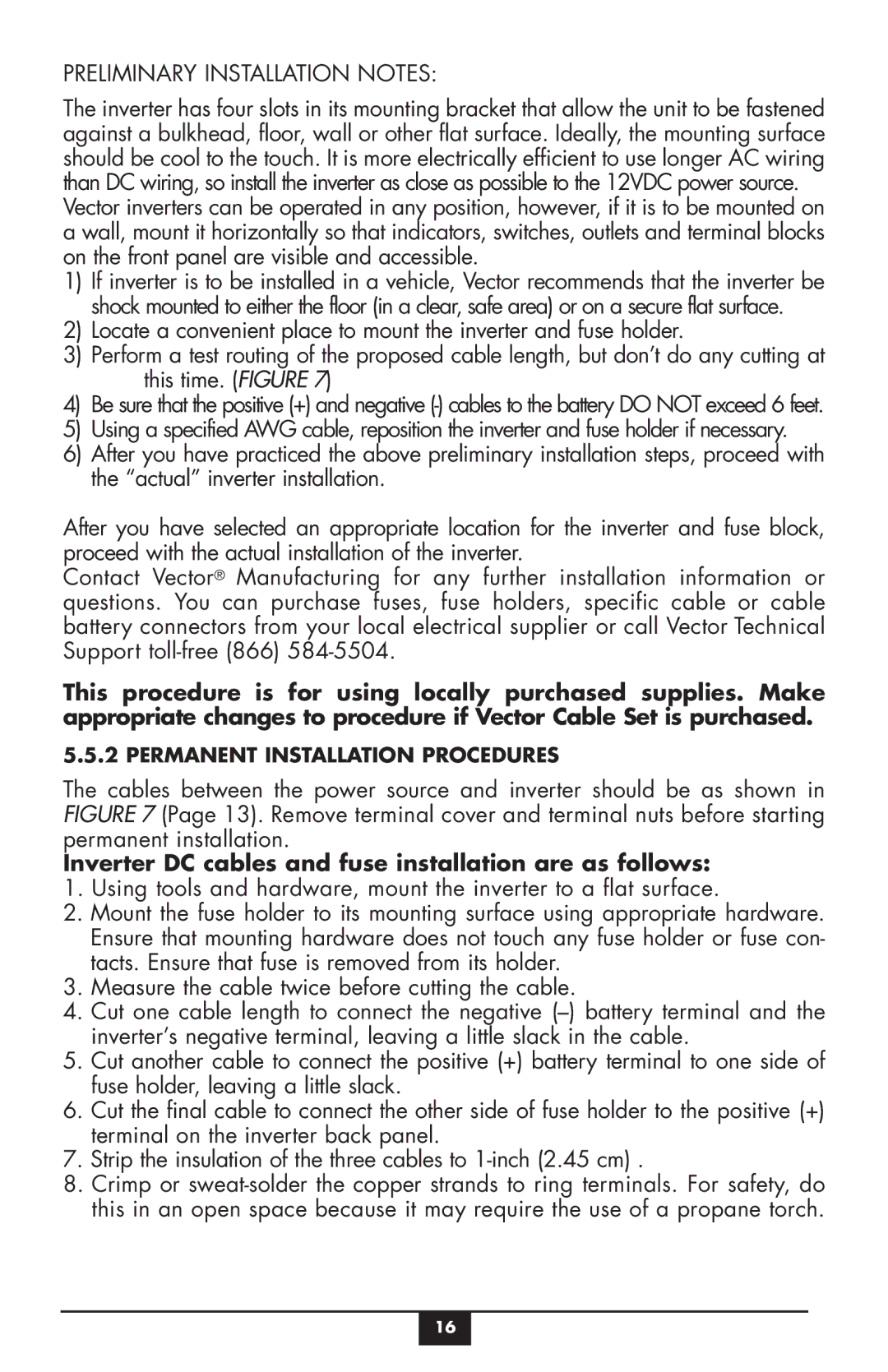VEC049C specifications
The Vector VEC049C is a sophisticated and portable power inverter designed for rugged automotive and emergency applications. This inverter converts 12V DC battery power into a stable 120V AC power source, making it ideal for powering a variety of electronic devices while on the go. It serves as an essential tool for outdoor enthusiasts, travelers, and those in need of backup power solutions during emergencies.One of the main features of the VEC049C is its robust construction, which ensures durability in challenging environments. This inverter is equipped with multiple output options, including standard AC outlets as well as USB ports, catering to a wide array of devices such as laptops, smartphones, and small appliances. Its capacity to deliver up to 400 watts of continuous power makes it suitable for charging devices or running equipment like lights and fans.
The Vector VEC049C incorporates advanced technology to enhance both performance and safety. The unit features built-in protection mechanisms against overload, short-circuit, and over-temperature, providing peace of mind during operation. Furthermore, the inverter employs a modified sine wave output, which is often sufficient for less sensitive electronics and ensures efficient energy conversion.
The design of the VEC049C is both compact and lightweight, allowing for easy transport and storage. Users can conveniently stow it in their vehicle or carry it in a backpack, making it a practical option for road trips, camping adventures, and outdoor activities. The unit can easily be plugged into a car’s 12V outlet, allowing for easy access to power whenever it's needed.
In terms of user-friendliness, the Vector VEC049C features an LED status indicator that provides real-time information about the power condition and operation status. This usability aspect is crucial for individuals who may not have technical backgrounds but require reliable power solutions.
Overall, the Vector VEC049C stands out for its combination of portability, safety features, and versatility. With its capacity to bridge the gap between 12V DC and 120V AC power needs, this inverter is an invaluable asset for anyone seeking reliable energy solutions in a mobile format. Whether on a road trip, at a campsite, or during a power outage, the VEC049C ensures that essential devices remain operational and accessible.
